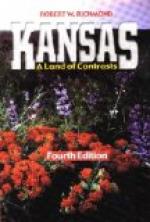One regrettable result of the way in which the American papers turn liberty into license is that it actually deters many people from taking their share in public life. The fact that any public action is sure to bring down upon one’s head a torrent of abuse or adulation, together with a microscopic investigation of one’s most intimate affairs, is enough to give pause to all but the most resolute. Leading journals go incredible lengths in the way they speak of public men. One of the best New York dailies dismissed Mr. Bryan as “a wretched, rattle-pated boy.” Others constantly alluded to Mr. Cleveland as “His Corpulency.” For weeks the New York Sun published a portrait of President Hayes with the word FRAUD printed across the forehead.
Such competent observers as Mr. George W. Smalley (Harper’s Magazine, July, 1898) bear testimony to the fact that the irresponsibility of the press has seriously diminished its influence for good. Thus he points out that “the combined and active support given by the American press to the Anglo-American Arbitration Treaty weighed as nothing with the Senate.” In recent mayoralty contests in New York and in Boston, almost the whole of the local press carried on vigorous but futile campaigns against the successful candidates. Several public libraries and reading-rooms have actually put some of the leading journals in an Index Expurgatorius.[18]
The moral and intellectual defects of the American newspaper are reflected in its outward dress. Neither the paper nor the printing of a New York or Boston daily paper is so good as that of the great English dailies. American editors are apt to claim a good deal of credit for the illustrations with which the pages of their journals are sprinkled; but a less justifiable claim for approbation was surely never filed. In nine cases out of ten the wood-cuts in an American paper are an insult to one’s good taste and sense of propriety, and, indeed, form one of the chief reasons for classing the American daily press as distinctly lower than that of England. The reason of this physical inferiority I do not pretend to explain. It is, however, a strange phenomenon in a country which produces the most beautiful monthly magazines in the world, and also holds its own in the paper, printing, and binding of its books. But, as Mr. Freeman remarks, the magazines and books of England and America are merely varieties of the same species, while the daily journals of the two countries belong to totally different orders. Many of the better papers are now beginning to give up illustrations. A bill to prevent the insertion in newspapers of portraits without the consent of the portrayed was even brought before the New York Legislature. An exasperating feature of American newspapers, which seems to me to come also under the head of physical inferiority, is the practice of scattering an article over the whole of an issue. Thus, on reaching the foot of a column on page 1 we are more likely than not to be directed for its continuation on page 7 or 8. The reason of this is presumably the desire to have all the best goods in the window; i.e., all the most important head-lines on the front page; but the custom is a most annoying one to the reader.




